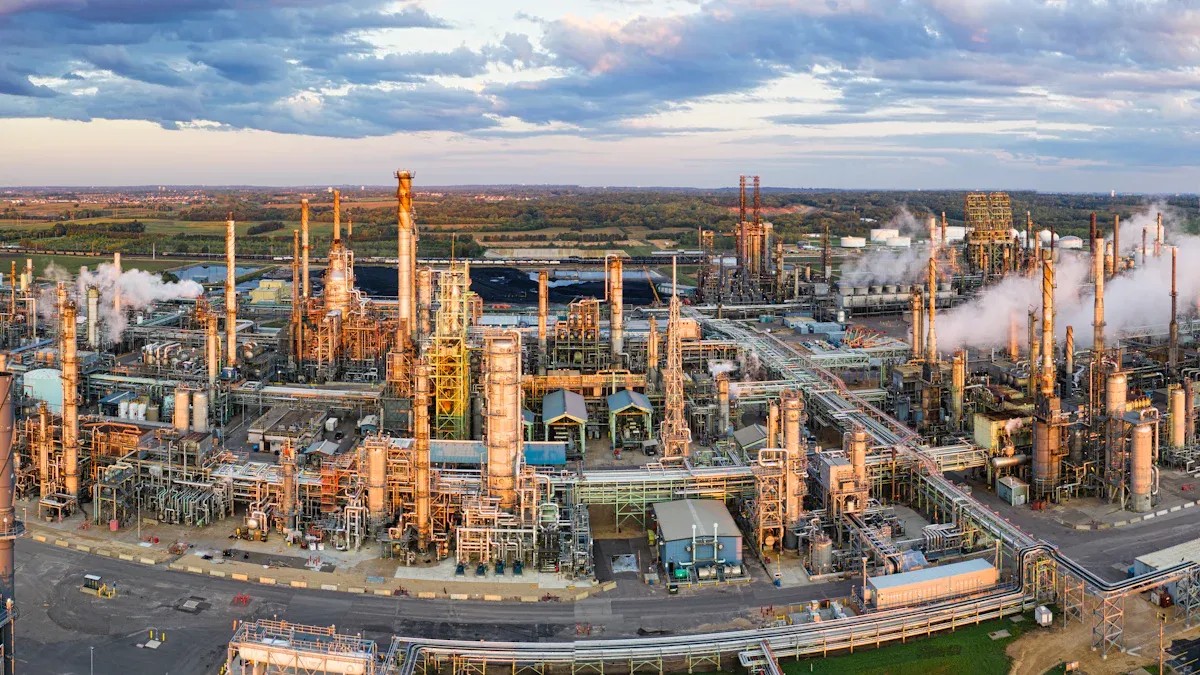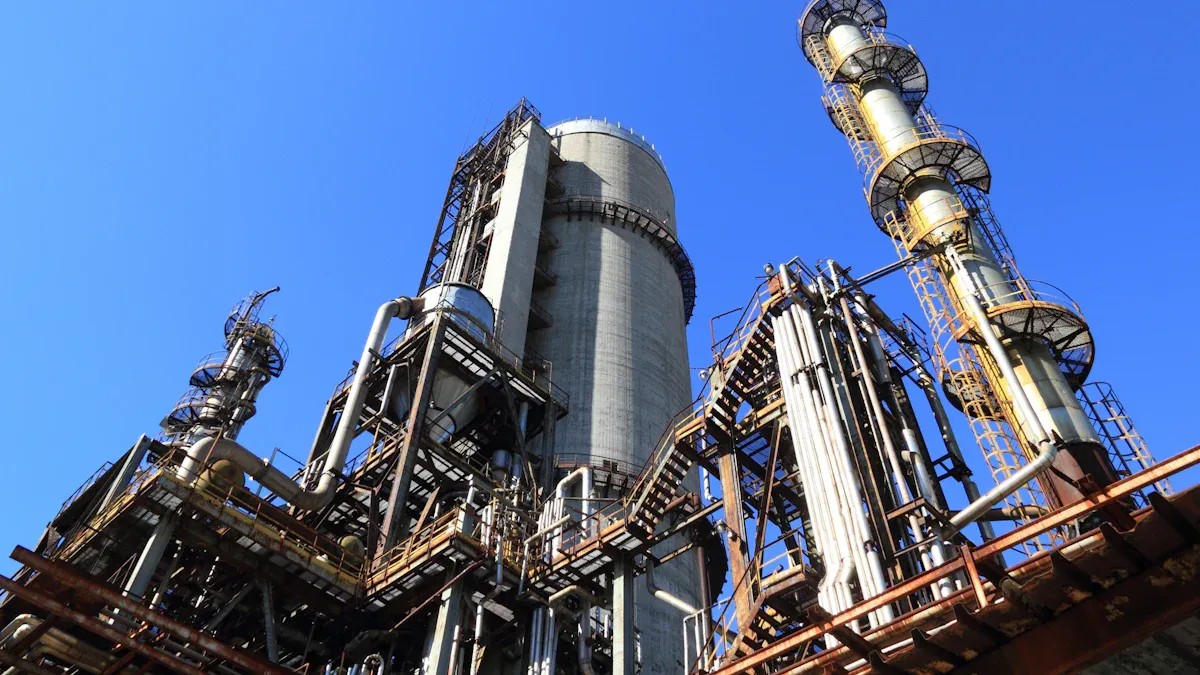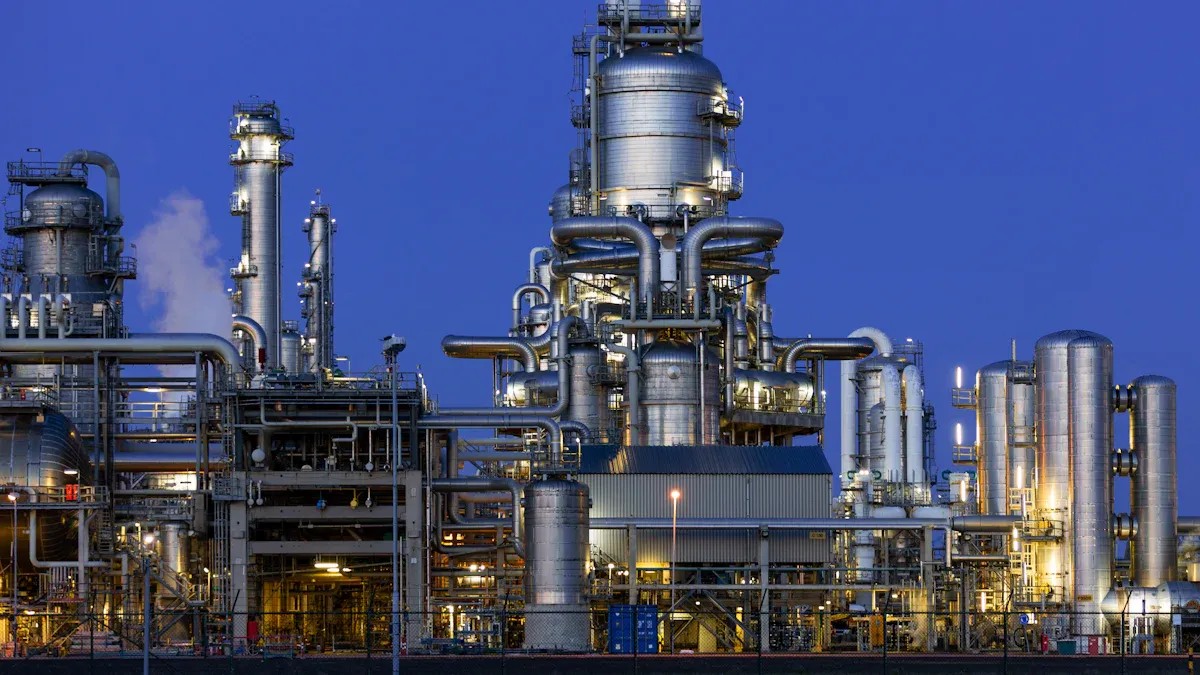BLOG
CONTENTS
Acrylonitrile Catalyst and its Applications

You use an Acrylonitrile Catalyst to make the reaction faster. This reaction makes acrylonitrile. Acrylonitrile is very important for making plastics, fibers, and rubbers. You can find acrylonitrile in many things you use every day. It is in clothes and car parts. In the last ten years, people made about the same amount of acrylonitrile each year. The most made was 2.7 million tons in 2021. In 2024, people made 2.6 million tons. Catalysts help people make acrylonitrile quickly and in big amounts. This helps many businesses all over the world.
Key Takeaways
Acrylonitrile catalysts help make acrylonitrile faster. Acrylonitrile is needed to make things like plastics and fibers. Using new catalysts makes more acrylonitrile, up to 98%. Older ways only made about 80% to 83%. Bismuth molybdate catalysts are used the most. They help make acrylonitrile well and do it efficiently. New technology tries to be better for the environment. It cuts down on waste and pollution. This makes the process safer for nature. Learning how the reaction works can help make more acrylonitrile. It also helps stop making things we do not want.
Acrylonitrile Catalyst Overview

Definition and Role
An acrylonitrile catalyst makes the chemical reaction go faster. It helps change propane or propylene and ammonia into acrylonitrile quickly. This also means there is less waste. The main reaction in factories is called ammoxidation. In this reaction, you mix propane, ammonia, and oxygen. The acrylonitrile catalyst helps these chemicals join together. This forms acrylonitrile.
Here is a table that shows the main reaction type:
The catalyst does more than just help. It is needed to make the reaction work well. Without the catalyst, you get less acrylonitrile. You also get more things you do not want. The Sohio Acrylonitrile Process uses this catalyst in one step. You mix propylene and ammonia. The catalyst helps you make acrylonitrile fast and pure. This way is now the most common way to make acrylonitrile.
Importance in Industry
Acrylonitrile catalysts are important in many industries. They help make things you use every day. These catalysts help make acrylonitrile for plastics, fibers, and rubbers. You see their use in cars, planes, electronics, and clothes.
Here is a table showing where acrylonitrile catalysts are used:
Using an acrylonitrile catalyst gives better results than old ways. Here are some ways the catalyst helps:
The new way gets 98% acrylonitrile from the reaction.
Old ways only get about 80% to 83%.
The new way does not make toxic waste and uses renewable materials.
The acrylonitrile catalyst helps save resources and keeps the environment safe. It also helps meet the need for lighter and greener materials. More people want products that are better for the planet. So, there is a move to use bio-based acrylonitrile. This helps make the economy cleaner and lowers carbon pollution. There are still problems like changing prices for materials and safety issues. But the acrylonitrile catalyst is still very important for making modern products.
Types of Acrylonitrile Catalysts
There are different kinds of catalysts for making acrylonitrile. Each kind has special things that help you get more acrylonitrile. They also help keep the process cleaner. Some new catalysts, like AcryloMax™ and others, use new ideas. These ideas make the process safer and work better. These new changes help you get more acrylonitrile and make less waste.
Bismuth Molybdate Catalysts
Bismuth molybdate catalysts are the most used type for making acrylonitrile. They work at many temperatures and give high selectivity. This means you get more of what you want and less of what you do not want.
Here is a table that shows how these catalysts work:
You can also look at their chemical structure:
MoBi-m and MoBi-c samples have four main peaks.
Peaks at about 317 and 394 ppm show the Mo-17O-Bi structure.
Peaks at about 744 and 815 ppm show the Mo-17O-Mo structure.
These peaks change when the catalyst is on MoO3 nanobelts.
Bismuth molybdate catalysts work even better with microwave heating. You get higher selectivity and better conversion rates. For example:
With microwave heating, you can get yields over 50%.
At 70% conversion, you get twice as much acrolein as with regular heating.
Multicomponent Oxide Catalysts
You can also use multicomponent oxide catalysts to make acrylonitrile. These catalysts have more than one metal in them. The U-Sb-oxide catalyst, especially the USb3O10 phase, is very important. In this catalyst, pentavalent antimony works with uranium to help the reaction. Lattice oxygen in the catalyst helps the process move forward.
Multicomponent oxide catalysts have several good points:
Recent Advancements
Now, there are new acrylonitrile catalyst technologies that use captured CO2 or bio-based feedstocks. For example, Mars Materials made a process that does not make toxic byproducts like hydrogen cyanide. This new way is safer and gives a cleaner product. INEOS also made catalysts that work in all acrylonitrile plants. These give high yields and steady performance.
Tip: New catalysts like AcryloMax™ help you get more acrylonitrile with less harm to the environment. They also let you change how you run your plant to get the best results.
These new changes mean you can make acrylonitrile better. You get higher selectivity and conversion rates. This helps you save resources and protect the environment.
Acrylonitrile Catalyst Mechanism
Molecular Action
You can learn how an acrylonitrile catalyst works by looking at molecules. The catalyst helps turn propylene and ammonia into acrylonitrile. First, the catalyst makes propylene ready to react. Then, ammonia joins in and helps the reaction go forward. Acrylonitrile forms, but other things like acetonitrile and hydrogen cyanide also form. The reaction happens in more than one step. It takes about the same energy to make acrylonitrile as it does to make acrolein. This means both chemicals are made in a similar way.
Note: The catalyst does more than just make the reaction faster. It helps the molecules go the right way. This gives you more acrylonitrile and less waste.
Key Reaction Pathways
You can see how acrylonitrile forms by following each step. The process uses special molecules called intermediates. The table below shows the main steps and what you get at each part:
First, a starting molecule changes into acrolein. Next, acrolein reacts with ammonia and oxygen. This makes acrylonitrile and water. The acrylonitrile catalyst helps each step happen fast and clean. You get fewer unwanted things when you use a good catalyst.
You can change the temperature or the amount of ammonia to control the reaction.
You get better results with a catalyst that is very selective.
If you want to make acrylonitrile safely and well, you need to know these steps. The catalyst helps you get the most acrylonitrile and the least waste.
Industrial Applications

Sohio Process
The Sohio process is the main way to make acrylonitrile in factories. This method uses a special Acrylonitrile Catalyst. It helps change propylene, ammonia, and oxygen into acrylonitrile in one step. The Sohio process made production faster and cheaper for companies. You can see how it works in the table below:
This process lets factories make lots of acrylonitrile with less waste. Many companies use it because it gives high yields and saves money.
Polymers and Fibers
Acrylonitrile is found in many polymers and fibers. Acrylic fibers use acrylonitrile as a main part. These fibers make clothes that stay bright and strong after many washes. Acrylonitrile is also in carbon fibers. Carbon fibers help make car and airplane parts lighter. These materials help save fuel and make products last longer.
Acrylic fibers keep their color and shape.
Carbon fibers make sports gear and airplane parts lighter.
Plastics and Textiles
Acrylonitrile Catalyst helps make ABS plastics. You use ABS plastics in toys, car parts, and electronics. ABS is made by joining acrylonitrile, butadiene, and styrene. Catalysts like peroxy esters make ABS stronger and better. Acrylonitrile also helps make food containers. These containers keep drinks fresh and safe. Acrylonitrile makes containers good for soda and juice.
Tip: Using acrylonitrile in plastics and textiles makes products last longer and keeps food safe.
Common uses include:
ABS plastics for toys and car parts
Food containers for soda and juice
Strong fibers for clothing and carpets
Acrylonitrile is in many things you use every day. The Acrylonitrile Catalyst makes these products safer, stronger, and more useful.
Benefits, Challenges, and Trends
Efficiency and Selectivity
There are many good things about using an Acrylonitrile Catalyst. These catalysts help factories use less energy. They also help make less waste. The new cyclone system helps keep more catalyst in the factory. It also uses less energy. You get better selectivity. This means you make more acrylonitrile and less stuff you do not want. Machines last longer, so you do not need to fix them as much. You spend less money on repairs. Here is a table that shows some main benefits:
You can recycle acrylonitrile-based polymers without making harmful gases. This process uses the nitrogen and carbon in the polymer. It helps cut down on waste and makes useful things.
Environmental and Safety Concerns
Factories that use acrylonitrile catalysts must care about safety and the planet. New designs have made global impacts smaller by 36%. They also cut CO2 emissions almost in half. Eco-costs are lower now. You must follow safety rules to stay safe. Always use acrylonitrile outside or in places with fresh air. Wear gloves, goggles, and special clothes. Only trained people should work with these chemicals. Never breathe in the fumes. Keep acrylonitrile away from strong oxidizers.
Market Growth and Future Trends
The market for acrylonitrile catalysts is getting bigger. Experts think it will grow by 3.2% each year from 2024 to 2029. The market could get over two billion dollars larger. There will be more research on eco-friendly catalysts. Governments want companies to use safer and greener ways. Many companies now care about green chemistry and safe jobs. They also try to make catalysts that do not make toxic waste. You will see new ideas as more industries need acrylonitrile for things like clothes and cars.
You can see how the Acrylonitrile Catalyst changes today’s industry. It helps things work better and makes production more green. The table below shows how it makes chemical work safer for the planet:
New tools like Invireo™ lower carbon pollution and help people choose greener options. Keep learning about new ideas, because research will keep changing how you use these catalysts.
FAQ
What does an acrylonitrile catalyst do?
An acrylonitrile catalyst makes the reaction go faster. It helps you get more acrylonitrile and less waste. Factories use it to make things safer and easier.
Where do you find acrylonitrile in daily life?
Acrylonitrile is in clothes, car parts, and toys. You also find it in food containers. It helps make fibers and plastics strong. Many things use acrylonitrile because it lasts and keeps its shape.
Why do factories choose bismuth molybdate catalysts?
Factories use bismuth molybdate catalysts because they work at many temperatures. These catalysts help make more acrylonitrile and less extra stuff. They also help save energy in the process.
Are acrylonitrile catalysts safe for the environment?
New acrylonitrile catalysts help protect the environment. They lower waste and cut down on bad emissions. Many companies use eco-friendly designs to keep air and water clean.
How can you stay safe when working with acrylonitrile?
Wear gloves, goggles, and special clothes to stay safe. Always work where there is fresh air. Do not breathe in acrylonitrile fumes. Only trained people should use these chemicals.
